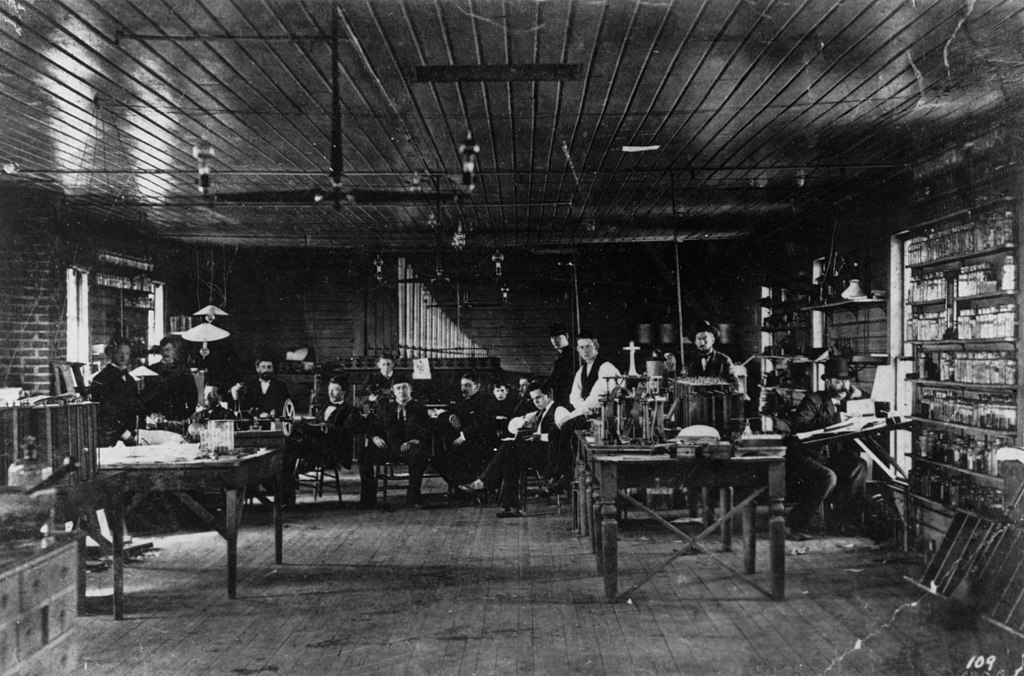Thomas Edison’s Life Story – Legends
Thomas Edison was a prolific inventor and businessman who is credited with the development of the first practical incandescent light bulb and the phonograph. He is often referred to as the “Wizard of Menlo Park” for his numerous inventions and contributions to the fields of telegraphy and electricity.

Edison was born in 1847 in Ohio and grew up in Michigan. He had a curious and inquisitive nature from a young age, and was known for his love of reading and experimenting with gadgets and machines. At the age of 21, he moved to New York City where he began working as a telegraph operator. He quickly became interested in the field of electricity and started experimenting with ways to improve telegraphy.
One of Edison’s most famous inventions was the incandescent light bulb. Before this, people had relied on gas lighting or candles to light their homes and businesses. Edison’s light bulb used a filament made of carbonized bamboo that could produce light when an electric current was passed through it. This was a major breakthrough and revolutionized the way people lived and worked.
Edison’s work on the light bulb led him to the development of the first electrical power station, which was built in New York City in 1882. This power station provided electricity to customers in the city and helped to establish Edison as a leader in the field of electricity.
In addition to his work in electricity, Edison is also known for his contributions to the field of sound recording. His invention of the phonograph, a device that could record and play back sound, was a major milestone in the development of modern music and entertainment.

Few little-known facts about Thomas Edison:
- Edison was home-schooled by his mother, who was a school teacher. He was a voracious reader and taught himself a wide range of subjects including science, math, and literature.
- Edison had a habit of working long hours and often slept only a few hours each night. He was known to work for days on end without sleep, fueled by coffee and cigars.
- Despite his many inventions and contributions to science and technology, Edison was not a strong formal student. He struggled in school and was eventually homeschooled because of his difficulty learning in a traditional classroom setting.
- Edison was deaf in one ear, a condition that he believed was caused by a bout of scarlet fever when he was a child. This did not stop him from becoming one of the most successful inventors in history.
- Edison was a strong believer in the power of hard work and persistence. He once said, “Genius is 1% inspiration and 99% perspiration.”
- Edison was a philanthropist and donated generously to various charitable causes. He also provided financial support to other inventors and helped to fund the development of new technologies.
- In addition to his work as an inventor and businessman, Edison was also a talented musician. He played the piano and sang, and enjoyed performing for his family and friends.
Some of Thomas Edison’s most important inventions and improvements:
- The incandescent light bulb: This was Edison’s most famous invention and the one for which he is most well-known. The incandescent light bulb used a filament made of carbonized bamboo to produce light when an electric current was passed through it. This was a major breakthrough that revolutionized the way people lived and worked.
- The phonograph: The phonograph was a device that could record and play back sound, and it was a major milestone in the development of modern music and entertainment.
- The motion picture camera: Edison’s motion picture camera was one of the first devices to capture and display moving images. This was a significant development that paved the way for the modern film industry.
- The telegraph: Edison made numerous improvements to the telegraph, a device that was used to transmit messages over long distances using electricity.
- The electrical power station: Edison’s work on the incandescent light bulb led him to the development of the first electrical power station, which was built in New York City in 1882. This provided electricity to customers in the city and helped to establish Edison as a leader in the field of electricity.
- The mimeograph: The mimeograph was a machine that could make multiple copies of documents using a stencil and ink. This was a significant development that made it easier to reproduce large quantities of documents quickly and inexpensively.
- The kinetoscope: The kinetoscope was a device that allowed people to view moving images by looking through a small viewing window. This was an early precursor to the modern film projector.
- The stock ticker: Edison’s stock ticker was a device that could transmit stock prices in real-time, making it easier for investors to stay up-to-date on the latest market developments.
Edison was married twice and had six children. His first wife was Mary Stillwell, with whom he had three children. After Mary’s death, Edison married Mina Miller and had three more children. Edison was known to be a devoted husband and father, and he enjoyed spending time with his family and friends.
Edison was a true innovator who changed the world with his inventions and contributions to science and technology. He received over 1,000 patents in his lifetime, and his work has had a lasting impact on the world we live in today.






